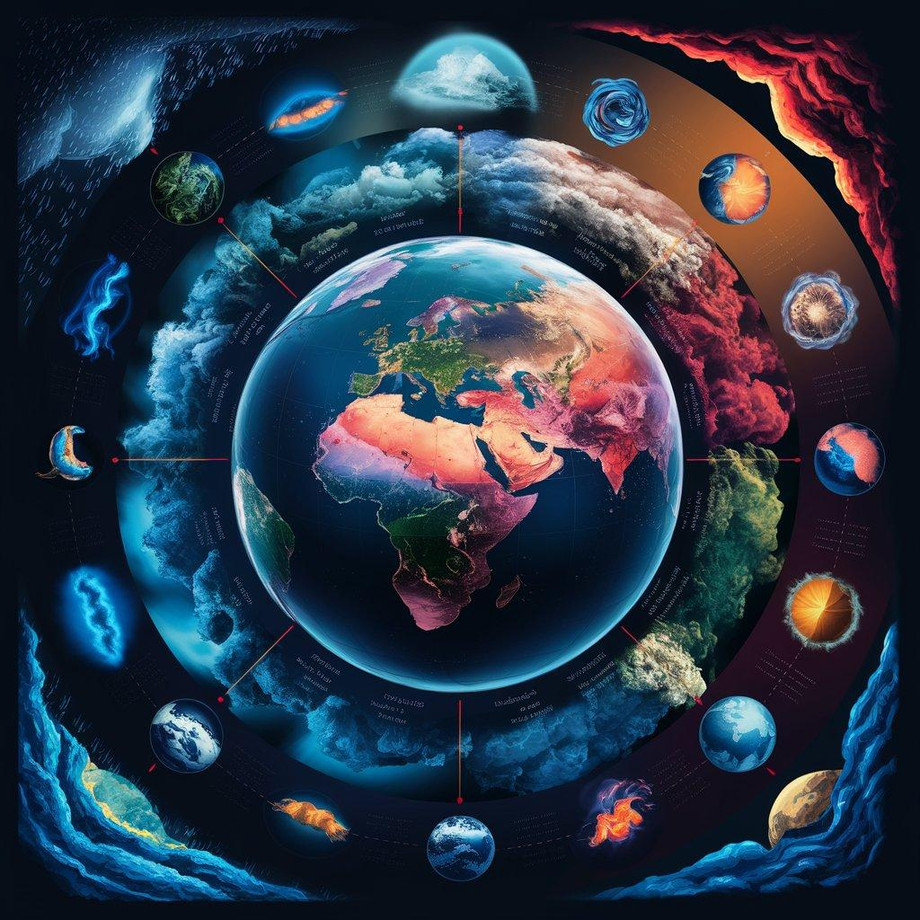Understanding climate and weather is crucial for comprehending Earth's dynamic systems. While often used interchangeably, climate and weather refer to different phenomena. Weather describes short-term atmospheric conditions in a specific area, such as temperature, humidity, precipitation, and wind over minutes to weeks. Climate, on the other hand, refers to the long-term average of weather patterns over decades to millions of years in a particular region.
What is Weather?
Weather encompasses the day-to-day state of the atmosphere. Various factors influence it, including air pressure, temperature, humidity, wind speed, and direction. Key elements of weather include:
-
Temperature: Measures how hot or cold the atmosphere is at a given time.
-
Humidity: The amount of moisture in the air.
-
Precipitation: Includes all forms of water, liquid or solid, that falls from clouds and reaches the ground.
-
Wind: Air in motion relative to the surface of the Earth.
-
Air Pressure: The force exerted onto a surface by the weight of the air above that surface in the atmosphere of Earth (or that of another planet).
What is Climate?
Climate is the average of weather over long periods and is typically defined by the conditions that prevail in a particular region over 30 years or more. Major elements that determine climate include:
-
Latitude: Distance from the equator affects the climate zones (tropical, temperate, polar).
-
Altitude: Higher altitudes tend to have cooler climates.
-
Ocean Currents: These can warm or cool the air above them, influencing the climate of coastal regions.
-
Topography: Mountains can block air masses and influence weather patterns.
-
Vegetation: Forests and plant life can affect both temperature and humidity.
Major Climate Zones
Earth's climate can be broadly categorized into several zones:
-
Tropical: Near the equator, warm year-round with high precipitation.
-
Dry (Arid and Semi-Arid): Characterized by low precipitation.
-
Temperate: Moderate temperatures, distinct seasonal changes.
-
Polar: Extremely cold temperatures with long winters and short summers.
-
Continental: Found in the interiors of continents, characterized by more extreme temperatures.
Climate Change
Climate change refers to significant changes in global temperatures and weather patterns over time. While climate change is a natural phenomenon, recent changes have been accelerated by human activities, particularly the burning of fossil fuels which increases greenhouse gas levels in the atmosphere. Impacts of climate change include:
-
Rising global temperatures.
-
Melting polar ice and glaciers.
-
Sea level rise.
-
More extreme weather events (storms, heatwaves, droughts).
Weather Forecasting
Meteorologists use a variety of tools and techniques to predict weather. These include:
-
Satellites: Provide images and data on weather patterns.
-
Radars: Used to track precipitation.
-
Weather Stations: Measure temperature, humidity, wind, and air pressure.
-
Computer Models: Simulate weather patterns to make forecasts.
The Importance of Understanding Climate and Weather
Knowledge of weather and climate is essential for:
-
Agriculture: Determines the best times for planting and harvesting.
-
Disaster Preparedness: Helps in preparing for natural disasters like hurricanes, floods, and droughts.
-
Urban Planning: Influences the design and construction of infrastructure.
-
Health: Impacts the spread of diseases and the overall well-being of populations.
Conclusion
Understanding the differences and relationships between climate and weather is fundamental to Earth science. While weather affects our daily activities, climate influences our long-term lifestyle and survival. With the ongoing challenges of climate change, it becomes even more crucial to study and comprehend these natural phenomena to adapt and mitigate their impacts on our planet.

